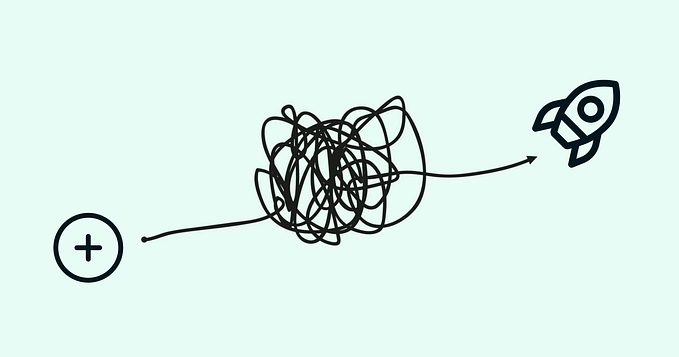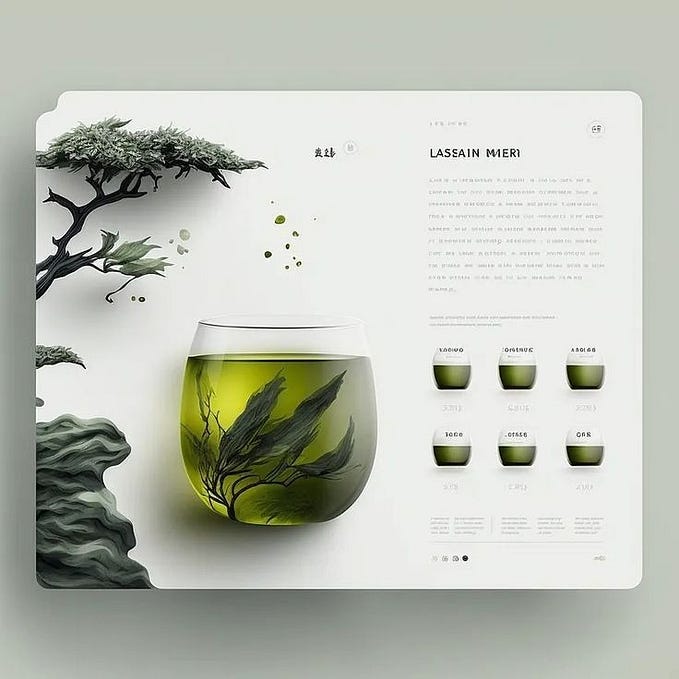How to design with love?
7 tips to fall in love with your job

It’s easy to get excited about your job if you’re designing for a company or industry that you REALLY care about, but the reality is that most people won’t actually get to do that. Don’t believe me? You don’t have to, this is actually coming from Gallup, who found that around the world only 13% of people are actually engaged at work, that leaves 87% not happy.
I don’t have number for design specific jobs, but my guess is that it won’t deviate drastically, let me explain why. The companies that you consider cool, only need so many designers, and if you’re working as a freelancer, the “cool” clients probably aren’t coming as often as you’d like. On top of that, these cool companies that you wish you could work for will probably have designers taking “your” place, but some of them would probably rather work somewhere else. See what I mean?
Now, if you are in a position where you can work with whoever you want, being able to pick your clients or projects, well… Congrats! You’re one of the lucky ones, just don’t forget that you deserve a fair compensation even if you’re having tons of fun, and love the company, if you’re good at something, you should never do it for free (or even below a fair price).
Ok… what about the rest of the mortals? Is all hope lost?
I don’t think so, otherwise this would be a very different article.
Struggle can be positive
Even though I suck at it, I really love skateboarding, and I would love to have had the chance to design something for a skateboarding brand, just because I relate so much with the culture and industry. Unfortunately, except for university & personal projects, I never really got the opportunity — but that's fine.
The truth is that, like most people, I have more than a single passion, and it just happens that my biggest passion actually isn’t skateboarding.
If you follow me online you can probably guess what it is — Design.
To me, that means that if I’m doing something related with Design I’m probably happy, the “what” that thing actually is, becomes a secondary concern.
Though, even when your job is actually doing the thing you love the most, it’s not all sunshine and rainbows. There’s a reason why someone is paying you to do something, there will be always things you’d rather not do, clients you would rather not have, meetings you’d rather skip, conversations you’d rather avoid, but it’s all part of the job, and if you love the essence of it you should be able to power through the rest.
In my past I’ve designed a magazine for real-estate, ads for auto-dealers, branding for accounting firms, books for children, and much more… not exactly what I would describe as “dream jobs”, but it helped me pay the bills whilst I was getting real world experience, learning stuff and progressing.
I’m lucky to say that I’ve been designing professionally since I was 18, but there were times before and briefly after where my job wasn’t design related, just because I needed a salary to be able to get by. Right after graduating from university I struggled to find actual paying job or clients… can’t say I miss the Portuguese financial crisis from 2010. Believe it or not, I was hired not once but twice, to work for companies that after a few months just stopped paying my salary, no notice, nothing… Oh, and they expected me to just continue to show up and work as if that was normal… 🤷♂
I also tried freelance and lets just say that most of the clients I got still owe me money…
Thanks to all that good luck, I decided to look for a “real” job, any job that could be a bit more reliable. That’s how I ended up working on toll roads.
I know, kind of random, but at least I could pay the bills and in between drivers I spent the dead time drawing on my sketch book, which helped me improve my drawing skills. #silverlining

It didn’t take long to actually get back to designing, but this struggle helped me gain some perspective, which is why I see the chance to get paid to design anything as a real gift.
That’s not one of the tips though, this is just context to help illustrate where I’m coming from. Honestly, I hope you don’t have to go through any kind of struggle to start to appreciate your job, but sometimes that can help — what doesn’t kill you, doesn’t just make you stronger, it also makes you appreciate things a bit more.
Now, let’s get into the actual tips.
1. A little happiness can go a long way
Make sure that you love something about your job, I mean REALLY love. The pay-check doesn’t count in case you’re wondering, that will never be real love.
In order to endure the things you don’t enjoy, you need a pay-off (again, not the money kind), something you’re looking forward to. If you don’t have that something you’ll just burn yourself down and probably others around you.

If you’re a designer, I have good news. There are many sides to our job, and you don’t have to love every single one of them. You might be more inclined towards crafting interactions and/or visuals, maybe you like to interact with people and learn about them or you’re just really into prototyping stuff. Whatever it is, lean into it and turn it into your super power. Find a reason to do it as much as possible, because if you do, people will start noticing your inclination towards that, and likely start seeing you as the expert of that, which likely means that you’ll probably get to do more of it.
Personally, I’ve been doing this through out my entire career, and believe me it just works, and my job just keeps on becoming more and more the things I like the most.
With a little luck, you can leverage that little thing that makes you happy and turn it into your full time job. Now, if you’re a bit like me, and love a bit of variety, then you can try to look for the intersection point of the things you love and bring them together, when it makes sense, of course.
For instance, I love illustration, though working as a Product Designer you don’t always get a chance to actually illustrate, so I had to find a way.
If you need to present your work, you can focus on the actual work, show off your prototypes, mocks and flows, but after a while that becomes a bit boring and not super engaging, as a way to combat that you can do a bit of storytelling, and illustration goes perfectly with that. See what I mean? The opportunities are there, you just have to be willing to take them.
2. Keep progressing
The are no shortcuts, as far as I know, the only way you get good at something is by practising it. I believe that “talent” is just a sum of passion and repetition. The cool thing about practising is that the better you are, the easier and funner it becomes.
When you’re progressing at the things that you love, it will be noticeable, and as I already said for the previous point, people will think of you first when that thing is needed. Which just gives you the chance to do more of it and get even better in the process.

If you’re afraid you’ll get stuck doing one thing and will eventually start hating it, switch it up. Get better at more stuff, specially things that complement the things you’re already good at.
For instance, going back to me, I’m a bit of a design slut and love almost every field, being animation one of them.
I can’t imagine just stopping doing animation, so… in one of the first assignments when I started my first UX job, I found a way to sneak it — at first as a way to present work, then turning that into prototypes… and guess what? That’s where I started to become the “animation guru” in the team. Looking back, I wasn’t even that great at it, but with enough practice it started became noticeable my passion for it, and it became one of my “super powers”, and because of that I was able to do it more and more, which allowed me to learn, improve and get better at it.
I must warn you though, this is where the impostor syndrome strikes the hardest. When you’re stepping out of your comfort zone and trying new things, in your mind you’ll never be good enough.
As you learn and progress at a certain thing, you’ll realize there’s much more you didn’t know, and so much more talented people around the world.
Don’t let that discourage you, progression is an internal battle, if today you’re better than yesterday, you’re on the same track all these talented people went through.
Being good at something isn’t a final state, it’s a never ending work in progress. The moment you stop trying to get better, is the moment you start to get worst.
3. Give a f#ck
When you just don’t care, you can be really good at something but still deliver crap. This is where you really need to do some soul searching and find a reason to care about what you’re about to deliver. If you can’t find anything I can give you something to care about — care about yourself.

Take pride in your work and have a little self-respect. As a designer, you’re in a position where you can make the world a bit better than it is, even if it’s just visually better. So push for your best ideas, get a backbone and fight for what you believe in.
If you design just for the pay-check you might see yourself without one sooner than you think. These things catch up to you.
Now, good designers don’t just care about themselves, they have empathy with who they’re designing for, so my advice there is to do some research. Learn more about these people and try to connect with them on a more human level. Seeing the impact that your work can have, and going beyond numbers can really help you start caring about what you deliver.
It also helps if you care in someway about the company’s mission, even if the thing you’re designing for them isn’t your dream.
What if you can’t believe in their mission because it’s evil? — personally I don’t have experience at that level, but my naive advice would be to try to push for change from the inside, worst case scenario you’ll get fired because of it, you can get on the news or write a medium post about it and on the next day you’ll have companies that respect your view offering you a job. 😅
4. Don’t just hang in there
If you want to take action and start pushing for the things you care the most sometimes it might be difficult to actually get started, because you already have a lot of work to do, and the right opportunity can take time to arise, but be patient and stay sharp. Above anything, make sure that you don’t miss out on the opportunity, even if it required an extra effort. This is for you, so if you don’t put in the effort, nobody will.

Also, don’t give up on the first challenge, sometimes it takes a bit for people to notice your efforts, just make sure to be consistent and keep pushing.
If after a significant push from your side you don’t see a return, then it’s time to redirect your efforts to a place where you can potentially see that happening, which possibly means looking for another job.
I’ve been there. It’s easy to get stuck in the tunnel, after a while the darkness starts to seem familiar, kind of comfortable even, to a point where you forget that light is even a thing.
Or maybe, you know it’s still there but you just expect it to find you, but in life most of us aren’t in a train and if you want to see light again, you have to walk towards the end of the tunnel.
5. Team up
Continuing the tunnel metaphor, you’re not on a train but you’re not actually alone. Most of the time there will be people around you, and these can also be your way to get to the light, and you can even walk towards it together.

After more than a decade working for different companies in very different countries I came to realize that this is true everywhere. The impact that the people you work with have on how much you love what you‘re doing, sometimes can be greater than the actual job. That means that even if you have your dream job you might end up hating it just because of the people you’re working with.
Now, most of the times you can’t actually pick the people you work with, but you can at least try to be the positive change.
Most important thing to keep in mind, don’t be an asshole. Believe it or not, that goes a long way.
Don’t judge people by their surface, try to see their potential. Most of your teammates can actually help you be better, and you can help them too. Just leverage each other’s skills, do cool things and be kind, before you know it you’ll have made a few new friends, and going to work will become that much easier.
What if you’re surrounded by assholes? Don’t bother trying to be the positive change, just run to the exit, that’s definitely not a sustainable place to work, specially if you’re looking to actually love what you do.
6. Allow yourself to have fun
A simple fact of life is that eventually, we’re all going to die, so there’s no point in taking life super seriously. Have fun with it, take chances and when you can, make it entertaining, even if it’s just for you.

I feel like everyone is using memes and GIFs in presentations for that exact reason nowadays, but personally I like to take in one step further, where people might not expect it – easter eggs. I lost count how many times I’ve subtly quoted Michael Scott, I know it’s kind of silly but it just makes it fun for me and it’s not even that hard. See?
The extra bonus you also get, is when someone notices it, you might have just made a new friend for life.
Another way to have fun is to work on something for yourself. It doesn’t even have to be something with big ambitions, just have fun and take the change to learn stuff and get better at something.
Personally I really think having fun is key, that’s why I often engage in side things like making a poster for this thing or a sticker for that other thing, because I have fun with that and it’s a nice break from the day-to-day routine. And if your company does things like hack days, join in and find something fun to work on.
Remember this, the moment you stop having fun brings you once step closer to the moment when you start to hate it.
7. Take a break
Last, but probably the most important thing in this article, take a break.

As you can see by the frequency I post on Medium, I’m not afraid of taking a break. When I thought of this point I did a bit of research and came across this article, which reminded me other things I read in the past — which is probably why I came up with it in the first place — where researchers have study people working and they found there’s an actual limit to the amount of time that a human being can stay concentrated in a single task without a break, and apparently that’s less than an hour (between 52–45 min, depending where you read it), so, you’re not actually making yourself or your employer any favours by working long hours without taking a break.
You need breaks to allow your brain to process information, and to make sure that the time you’re investing in something is actually pushing you forward. Work smarter, not harder.
You might already been doing it unintentionally, by mindless scrolling slack or looking at cat memes on the internet, so why don’t be intentional about it?
This goes beyond just taking breaks every hour or so. You also have to allow yourself to switch off when you leave work and enjoy the other things in your life. Again, if you don’t, you’re not actually making anyone any favours, you’re just burning yourself down.
If you take anything from this article, let it be this: Rest! Enjoy your family, enjoy your friends or just your own alone time, allow yourself to do whatever it takes for you to recharge, even if that’s watching The Office for the 10th time in a row. Loving what you do doesn’t mean you have to do it 24/7.
You only have 4-5 hours of creative energy per day, so use them wisely and then chill.
Easier said than done?
What if you don’t love absolutely anything about design? Why did you become a designer? Think hard about that, if you don’t see a way out I can only advise you to start looking for another job. You only get one life, so don’t waste more time doing something you hate.
If there’s something you love or are interested in, invest some of your own time on that thing. For instance, if you’re a designer but your dream is to actually be an illustrator, the only way that someone hires you to do that kind of work (even if it’s for an internship) is if you either have some level of experience/education on it or if you have a portfolio with example of what you can do. You have to take the first step and put in the time if you want to switch. You might be thinking “Sure guy! that’s easier said than done.” but I’m not just saying it, this (and everything I write for that matter) comes from personal experience.

3 years into my first properly paying design job (post-struggle), I wanted to move to London and get into UX Design, but I felt like my background and experience (in graphic design) wasn’t enough to get me into it, so on my own time I worked on a couple of fictional projects with a engineer friend of mine (shout-out Rui Peres) and then used that work as portfolio to get my first UX Design job, in London.
If you want change, you have to initiate it, and bear in mind that most likely you will still have to endure things that are less fun, because they will always be there.
Because design is my passion, I see anything that makes me a better designer as a growth opportunity I should take.
Sure, it’s probably more fun to sit behind a sketch-book, iPad or computer and make something for myself. But if I want my work to have impact, I need to think beyond my desk, and that means doing things that are outside my comfort zone. It hard, but doing that, will actually help me get better at the thing I love, so that serves as a good motivator.
Thanks for reading! 🙏
Since you’re here, my name is José Torre and I’m just a design loving designer born in Portugal, working & living in Canada.Nowadays I consider myself one of the lucky ones. I love my job and the company I work for is actually incredible, but since it wasn’t a straight path to get here I thought I would share some insights I’ve gather along the way.
If you feel like talking, connecting or just want to see what I’m up to, you can find me on Twitter, LinkedIn, and even Instagram.











